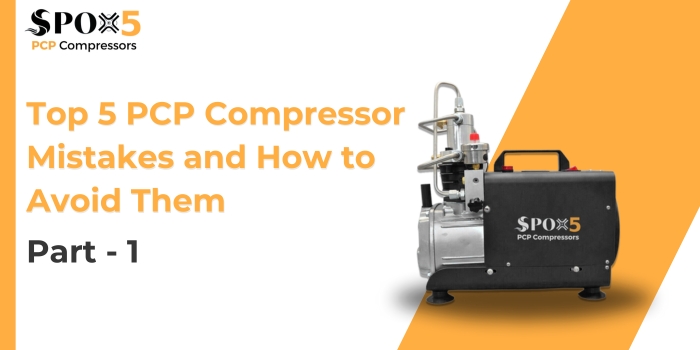PCP (progressing cavity) compressors are the workhorses of the compressed air world, powering everything from air rifles to industrial applications. But like any powerful tool, they require proper handling to ensure safety, efficiency, and longevity. Here, we explore the top 5 common mistakes with PCP compressors and provide solutions to keep your air source running smoothly.
Mistake #1: Ignoring the Manual
The Problem: Every PCP compressor model has its own specific capabilities and limitations outlined in the user manual. Ignoring these guidelines can lead to a world of trouble.
The Consequences: Skipping the manual can result in:
- Reduced Efficiency: Operating outside the recommended pressure range or using the wrong settings can strain the compressor and decrease its overall efficiency.
- Premature Wear and Tear: Pushing the compressor beyond its limits can accelerate wear on internal components, shortening its lifespan.
- Safety Hazards: Operating with improper procedures or exceeding pressure limits can increase the risk of accidents and injuries.
The Solution: Make the user manual your best friend. Familiarize yourself with:
- Recommended Pressure Range: Each model has a specific pressure range it’s designed to handle. Always operate within these limits.
- Compatible Fluids: The manual will specify the types of fluids the compressor can handle safely. Using incompatible fluids can damage internal components.
- Maintenance Schedule: The manufacturer recommends a specific maintenance schedule for oil changes, filter replacements, and inspections. Regular maintenance ensures optimal performance and longevity.
Mistake #2: Neglecting System Design
Problemet: Om man enbart fokuserar på själva kompressorn och försummar hela systemkonstruktionen kan det leda till prestandaproblem.
The Consequences: A poorly designed system can put undue stress on your PCP compressor and hinder its ability to perform efficiently:
- Improper Pipe Sizing: Undersized pipes create excessive back pressure, reducing the compressor’s effective PSI output and potentially leading to overheating.
- Otillräcklig filtrering: Om man inte använder lämpliga filter före kompressorn kan föroreningar tränga in i systemet och skada interna komponenter.
- Ignorering av systemets mottryck: Om mottrycket från nedströmsutrustning ignoreras eller inte hanteras kan det minska kompressorns kapacitet att leverera önskat flöde.
Lösningen för dig: När du planerar ett PCP-kompressorsystem måste du ta hänsyn till alla aspekter av konstruktionen:
- Dimensionering av rör: Rådgör med en kvalificerad ingenjör för att fastställa lämplig rördiameter baserat på erforderligt flöde och tryckfall.
- Filtrering: Installera lämpliga filter vid kompressorns inlopp för att avlägsna eventuella föroreningar från den inkommande luften eller gasen.
- Hantering av mottryck: Identifiera potentiella källor till mottryck nedströms och implementera strategier för att minimera det, t.ex. genom att använda rör med större diameter eller installera tryckbegränsningsventiler.
Stay tuned for Parts 2 & 3 of this blog series, where we’ll explore additional mistakes to avoid and delve into proper maintenance practices for your SPOX5 PCP compressor!

